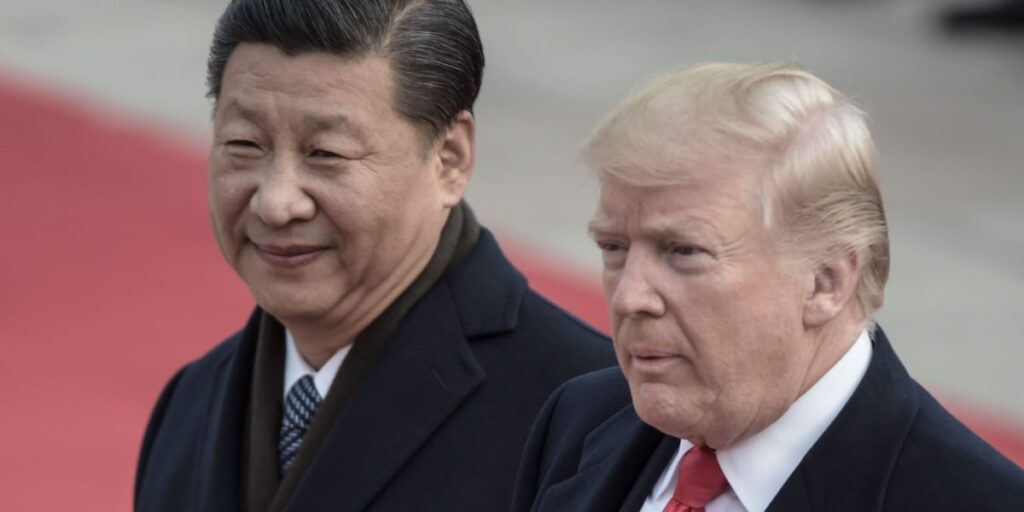
Republican presidential candidate Trump has said he may impose 60% tariffs on Chinese imports if he returns to the White House, while a new analysis predicts that would significantly slow down the world’s second-largest economy and will It’s pushing it to the brink of deflation.
Taking into account the impact of Trump’s 2018 tariffs on China, economists at UBS provided a simplified model of the impact of a new round of tariffs, assuming that China does not retaliate, other countries do not comply with U.S. tariffs, and some Trade moved elsewhere.
They estimate that 60% tariffs will slow China’s GDP growth by 2.5 percentage points over the next 12 months. About half of the drag comes from lower exports, with the remainder coming from indirect effects on consumption and investment.
Beijing’s stimulus policies to mitigate the impact of tariffs will reduce the economic drag to 1.5 percentage points, and UBS predicts that if interest rates are raised in mid-2025, GDP growth in 2025 and 2026 may fall to around 3%. That was below the bank’s baseline forecasts of 4.6% and 4.2%, respectively.
“Potentially more exports and production from other economies could help reduce the impact of higher U.S. tariffs over time, but other countries are also raising tariffs on Chinese imports,” UBS economists wrote in a published report. risks. “In addition, the lingering impact of weak employment and capital spending will also weigh on the domestic economy. “
The report added that if China retaliated in kind, the economic impact would be more severe, while less severe tariffs would have less impact.
But the mere threat of higher tariffs could still damage China’s economy. UBS warned that even if tariff increases are reduced or avoided, “some damage to the economy will be inevitable as producers and U.S. importers stay away from China to avoid risks and uncertainty.”
China’s economy is already slowing due to an ongoing housing collapse, weak domestic demand, massive local government debt and the Biden administration’s expansion of trade restrictions.
GDP grew by 4.7% in the second quarter, significantly lower than the 5.3% growth rate in the previous quarter and lower than the government’s 5% target. A recent meeting of top policymakers gave few signs that Beijing would take aggressive steps to stimulate the economy.
At the same time, demand in China is very weak, resulting in consumer inflation in June at an annual rate of only 0.2%. At the same time, producer prices are already falling.
UBS reported that 60% tariffs would weaken demand and intensify price competition, further exacerbating deflationary pressures. The result will be continued contraction in domestic producer prices through 2025, with core consumer inflation hovering around 0%.
That means overall consumer inflation is likely to remain around 0.5% over the next few years, 1 percentage point lower than the bank’s current baseline forecast.
Even before Trump’s growing election odds raised the prospect of new tariffs, views on China’s economy had dimmed.
Anne Stevenson-Yang, co-founder of J Capital Research and author of “The Chinese Economy,” said: “Years of erratic, irresponsible policies, excessive Communist Party control and failure to deliver China’s reform commitments have led to a dead end in China’s economy, with weak domestic consumer demand and slowing growth. A Wild Ride: A Brief History of China’s Economic Opening and Closing,write on New York Times May column.

